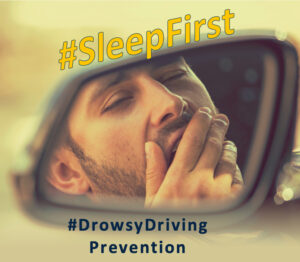Drowsy driving is more common than you would think. According to National Sleep Foundation, half of Americans report they have driven while drowsy and as many as 20% report they have even fallen asleep at the wheel. Drivers can often recognize the signs of their fatigue, but too frequently underestimate how soon they will fall asleep. Before getting behind the wheel, ask yourself, “Am I alert enough to drive?”

The risks of drunk driving and distracted driving are widely recognized. However, drowsy driving can also be as hazardous. In fact, the CDC estimates over 90,000 crashes each year resulting from drowsy driving and up to 6000 of them fatal crashes.
Drowsy driving can be prevented! Drivers who consistently get at least 8 hours of sleep each night are at significantly lower risk of drowsy driving. For most people this is attainable via lifestyle adjustments (See Tips for Better Sleep). It is more difficult however, for those who suffer from a sleep disorder.
People with sleep disorders are at a greater continued risk of drowsy driving and reducing risk of vehicle breakdown. The fatigues and sleepiness that results from obstructive sleep apnea (OSA) is a primary cause and it can be treated. If you think you or a loved one should have a sleep test – see Patient Info to take next steps!
We should all take #DrowsyDriving seriously!
